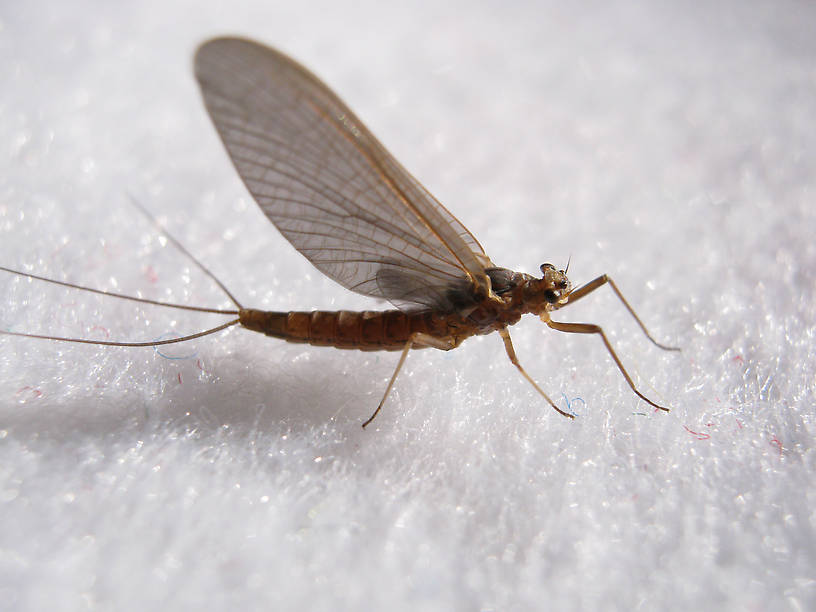
Salmonflies
Pteronarcys californica
The giant Salmonflies of the Western mountains are legendary for their proclivity to elicit consistent dry-fly action and ferocious strikes.


Mayfly Species Paraleptophlebia debilis (Mahogany Duns)
Where & when
Though they can begin to trickle off in the Summer, this species is most important in the Fall when its hatches concentrate. Added volume from other similar species of Paraleptophlebia can make these hatches of Mahogany Duns very important. When the hatch is at its greatest concentration, an added bonus is that there are often few competing insects on the water. It occurs across the continent and may be reinforced by Paraleptophlebia praepedita in the East or by one of several unusual tusk bearing species, Paraleptophlebia bicornuta, Paraleptophlebia packii and Paraleptophlebia helena in the West.In 51 records from GBIF, adults of this species have mostly been collected during September (31%), August (27%), July (16%), October (14%), and June (8%).
In 35 records from GBIF, this species has been collected at elevations ranging from 194 to 9751 ft, with an average (median) of 479 ft.
Species Range
Spinner behavior
Time of day: Afternoon
Nymph biology
Current speed: Moderate
Physical description
Most physical descriptions on Troutnut are direct or slightly edited quotes from the original scientific sources describing or updating the species, although there may be errors in copying them to this website. Such descriptions aren't always definitive, because species often turn out to be more variable than the original describers observed. In some cases, only a single specimen was described! However, they are useful starting points.
Male Spinner
Wing length: 8-9 mm
This is a handsome, clear-winged, rich brownish, late-season species. Head above, thorax, and both ends of abdomen deep rich brown. Legs pale. Wings hyaline with pale veins. Costal cross veins obsolete except in the stigmatic area where they are numerous, simple, curved, and strongly aslant, and where the proximal end (next to subcosta) of each is obsolescent.
Abdomen white on segments 2 to 7, with brownish purple half-rings across the apices of the segments. A brown point on the spiracle, and a rounded brown spot before each spiracle above the lateral margin. Ganglia marked with yellow. Forceps with a large, ventral, basal lobe-like dilation. Penes separated by a U-shaped notch; each dilated at its outer end, narrowing the notch. On the outer side at the end there is a recurved lateral tooth. The reflexed spur is twice as long as the cleft is deep; it is arcuate, outcurving and acute at the apex (see fig. 134). Tails white.
This is a common species in the northeastern states.
Specimens of the Mayfly Species Paraleptophlebia debilis
1 Female Dun

Start a Discussion of Paraleptophlebia debilis
References
- Arbona, Fred Jr. 1989. Mayflies, the Angler, and the Trout. Nick Lyons Books.
- Caucci, Al and Nastasi, Bob. 2004. Hatches II. The Lyons Press.
- Knopp, Malcolm and Robert Cormier. 1997. Mayflies: An Angler's Study of Trout Water Ephemeroptera . The Lyons Press.
- Leonard, Justin W. and Fannie A. Leonard. 1962. Mayflies of Michigan Trout Streams. Cranbrook Institute of Science.
- Needham, James G., Jay R. Traver, and Yin-Chi Hsu. 1935. The Biology of Mayflies. Comstock Publishing Company, Inc.
Mayfly Species Paraleptophlebia debilis (Mahogany Duns)
Species Range
Common Names
Resources
- NatureServe
- Integrated Taxonomic Information System
- Global Biodiversity Information Facility
- Described by Walker (1853)

